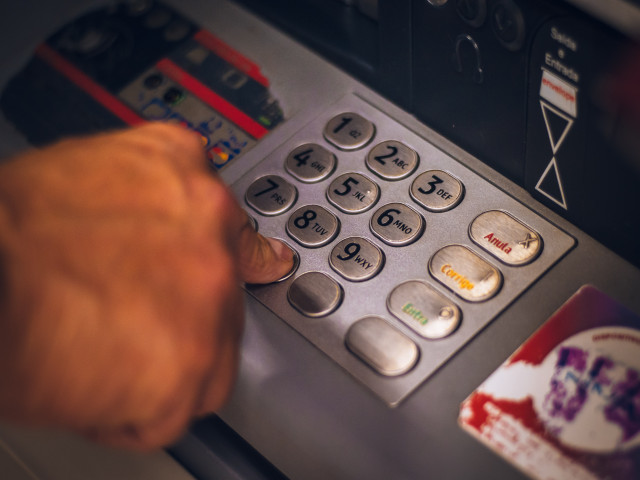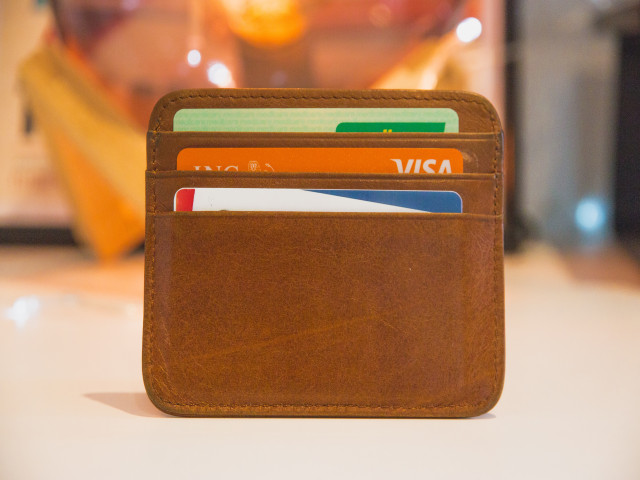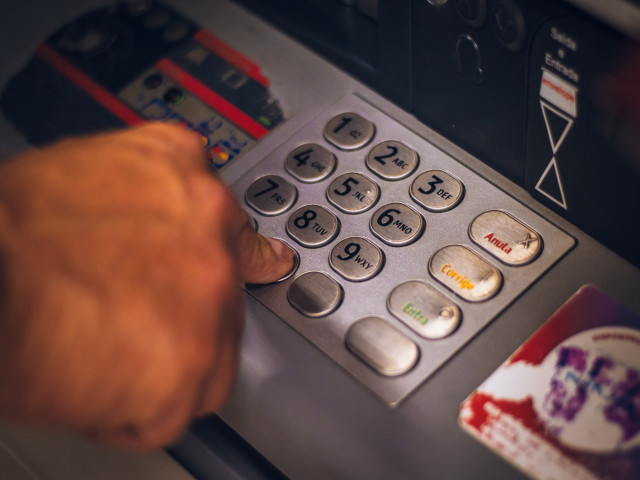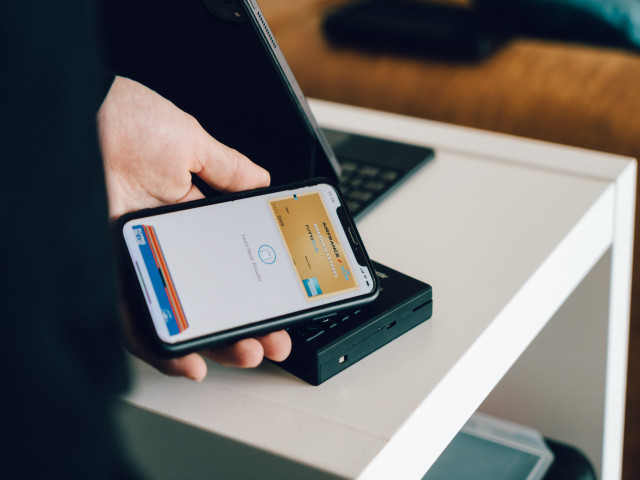17 Jan 2024
Ensuring Security: A Comprehensive Guide to Safe Online Money Transfers

Introduction
In the rapidly evolving landscape of digital finance, online money transfers have become an integral part of our daily lives, offering unparalleled convenience. However, with the convenience comes the paramount need for ensuring the security of these transactions. In this comprehensive guide, we will explore the best practices and strategies to safeguard your online money transfers, empowering you to navigate the digital financial realm with confidence and peace of mind.
Researching and Selecting Trusted Online Money Transfer Platforms
In the ever-expanding realm of online money transfers, the importance of choosing a reputable platform cannot be overstated. Conducting thorough research is the initial step in this financial journey. Start by exploring established platforms with a track record of reliability. Look for names that are well-known in the industry, as they often have robust infrastructures and adhere to stringent regulatory standards. Additionally, consider platforms that offer a variety of transfer options, catering to different needs and preferences. Delve into user-friendly interfaces that simplify the process, ensuring a seamless experience for users of all levels.
Evaluating Customer Reviews and Ratings for Reliability
Customer reviews and ratings serve as valuable insights into the real-world experiences of users with various money transfer platforms. Before committing to a service, take the time to scour online reviews and testimonials. Look for patterns in feedback, paying close attention to aspects such as transaction speed, customer support responsiveness, and overall satisfaction. Reputable platforms often have a transparent approach, actively addressing concerns and showcasing a commitment to customer satisfaction. Be wary of platforms with a high volume of negative reviews, as this may indicate potential issues that could impact your financial transactions.
Understanding the Security Features Offered by Different Services
Security is paramount when it comes to online money transfers. Different platforms employ various security measures to safeguard user information and financial transactions. Prioritize platforms that utilize encryption technologies to protect sensitive data during transfers. Multi-factor authentication adds an extra layer of security, ensuring that only authorized users can access accounts. Additionally, platforms that comply with industry regulations and hold relevant certifications demonstrate a commitment to maintaining the highest standards of security. Understanding these security features not only protects your financial assets but also instills confidence in the reliability of the chosen money transfer service.
Overview of Secure Payment Methods such as End-to-End Encryption
In an era where online transactions have become the norm, ensuring the security of payment methods is paramount. One robust security measure gaining prominence is end-to-end encryption. This advanced technology encrypts sensitive information from the point of initiation to its final destination, protecting it from potential threats throughout the transaction process. With end-to-end encryption, even if unauthorized entities manage to intercept the data, they would find it indecipherable without the corresponding decryption key. It establishes a secure tunnel, fortifying the confidentiality and integrity of financial transactions, instilling confidence in both consumers and businesses alike.
The Importance of Using Secure and Private Wi-Fi Connections
The foundation of secure online transactions lies in the connectivity medium, making the choice of Wi-Fi crucial. Utilizing a secure and private Wi-Fi connection adds an extra layer of protection against potential cyber threats. Public Wi-Fi networks, often convenient but inherently risky, can expose personal and financial data to malicious actors. In contrast, private Wi-Fi networks, preferably password-protected, significantly reduce the likelihood of unauthorized access. By conducting financial transactions over secure connections, users minimize the risk of data interception, ensuring that sensitive information remains confidential and safeguarded.
Best Practices for Safeguarding Personal and Financial Information During Transactions
Beyond encryption and Wi-Fi considerations, adopting best practices is fundamental to maintaining the security of personal and financial information during transactions. Implementing multi-factor authentication adds an additional security layer by requiring users to verify their identity through multiple means. Regularly updating passwords and using unique, complex combinations further fortify account security. It is also advisable to monitor financial statements regularly to detect and address any suspicious activity promptly. Additionally, choosing reputable and secure payment gateways and platforms ensures that transactions occur within a secure ecosystem, minimizing the risk of potential vulnerabilities.
The Role of Two-Factor Authentication in Enhancing Transaction Security
In an era where online transactions have become integral to our daily lives, ensuring the security of sensitive information is paramount. Two-factor authentication (2FA) emerges as a robust safeguard, adding an additional layer beyond traditional password protection. By requiring users to provide two forms of identification, typically a password and a temporary code sent to their mobile device, 2FA significantly reduces the risk of unauthorized access. This dynamic duo of security measures acts as a formidable barrier, fortifying the defense against cyber threats and unauthorized transactions. Embracing 2FA is not just a recommended security practice but an essential step towards fostering a secure online environment.
Best Practices for Creating Strong and Unique Passwords
Crafting a strong and unique password is the first line of defense against cyber threats. Best practices in password creation involve a combination of uppercase and lowercase letters, numbers, and special characters. Avoiding easily guessable information such as birthdays or common words adds an extra layer of protection. Furthermore, steering clear of reused passwords across multiple platforms is crucial. Implementing a mix of unrelated words or utilizing a passphrase approach adds complexity, making it exponentially harder for malicious actors to crack passwords. As the foundation of digital security, investing time and thought into creating robust passwords is a proactive measure that pays dividends in safeguarding personal and financial information.
The Importance of Regularly Updating Passwords for Online Financial Accounts
The landscape of cybersecurity is ever-evolving, and maintaining the integrity of online financial accounts requires ongoing vigilance. Regularly updating passwords is a simple yet effective strategy to stay ahead of potential threats. With the emergence of new hacking techniques and technologies, outdated passwords may become vulnerable over time. Financial institutions often recommend changing passwords at least every three to six months to mitigate risks. Additionally, promptly updating passwords in the aftermath of a security breach or when alerted to potential unauthorized access serves as a preemptive strike against potential exploitation. By embracing the practice of routine password updates, users can actively contribute to the resilience of their online financial defenses, ensuring a robust and secure digital presence.
Monitoring and Reviewing Transaction History
In the realm of personal finance, staying vigilant is key to maintaining a secure and healthy financial profile. Regularly checking and monitoring your transaction history is a fundamental practice that empowers individuals to spot any irregularities or discrepancies in their accounts. By dedicating a few minutes to review your transaction history frequently, you create a proactive defense against potential financial threats.
When examining your transaction history, pay close attention to unfamiliar or suspicious transactions. This could include unexpected charges, unauthorized withdrawals, or any activity that deviates from your typical spending patterns. Early detection of discrepancies allows you to address issues promptly, minimizing the impact on your finances.
Setting up Account Alerts for Unusual Activities or Transactions
In the digital age, financial institutions offer a range of tools to enhance security and provide users with real-time updates on their accounts. One such tool is setting up account alerts. These customizable notifications can be configured to alert you to specific activities, such as large transactions, international purchases, or any transactions exceeding predefined thresholds.
By leveraging account alerts, you transform your passive monitoring into an active defense mechanism. If an unusual transaction occurs, you'll receive an immediate notification, enabling you to investigate and take swift action. This level of control not only safeguards your finances but also adds an extra layer of peace of mind, knowing that you are actively engaged in protecting your assets.
Immediate Action Steps in Case of Suspected Fraudulent Activities
In the unfortunate event of suspected fraudulent activities, time becomes a critical factor. Having a predefined plan of action can make all the difference in minimizing potential damage. If you notice any unauthorized transactions or anomalies in your transaction history, take immediate steps to secure your accounts.
Contact your financial institution promptly to report the suspected fraudulent activity. Most banks and credit card companies have dedicated channels for fraud reporting, and swift action on your part can result in a quicker resolution. Simultaneously, consider temporarily freezing your accounts to prevent further unauthorized access.

Awareness of Common Online Scams Targeting Money Transfers
In the digital age, the convenience of online transactions comes hand in hand with the risk of falling victim to scams. One prevalent threat is online scams targeting money transfers. Fraudsters often exploit the anonymity of the internet to deceive individuals into transferring funds under false pretenses. Common tactics include fake charity appeals, lottery scams, and fraudulent investment opportunities. To protect yourself, exercise caution when receiving unsolicited messages or offers. Verify the legitimacy of requests, especially those urging immediate money transfers, and consider using secure payment methods to mitigate risks.
Tips for Recognizing Phishing Attempts and Fraudulent Schemes
Phishing attempts remain a persistent threat in the online landscape, where cybercriminals disguise themselves as trustworthy entities to obtain sensitive information. Recognizing these deceptive tactics is crucial for safeguarding your personal and financial details. Be wary of unsolicited emails or messages requesting confidential information, such as passwords or credit card numbers. Legitimate organizations rarely ask for such details via email. Check for spelling and grammar errors in communications, as these can be red flags. Additionally, verify the authenticity of website URLs before entering any personal information, and use reputable security software to add an extra layer of protection against phishing attempts.
Resources for Staying Informed About the Latest Online Security Threats
Staying informed about the ever-evolving landscape of online security threats is paramount in safeguarding your digital well-being. Numerous resources provide up-to-date information on the latest scams and cybersecurity risks. Follow reputable cybersecurity blogs, subscribe to newsletters from trusted organizations, and stay connected with official social media accounts of cybersecurity experts and organizations. Government websites, such as the Federal Trade Commission (FTC) in the United States, often publish alerts and guidelines on recognizing and reporting scams. By proactively seeking and absorbing information from reliable sources, you empower yourself to navigate the digital realm securely and become a less appealing target for online scammers.
FAQs
Q. How can I verify the security of an online money transfer platform?
A. Ensuring the security of an online money transfer platform involves various checks. Explore the steps to verify the security features and reputation of the platform.
Q. Are there risks in using public Wi-Fi for financial transactions?
A. Public Wi-Fi comes with inherent risks. Understand the potential dangers and learn how to mitigate risks when conducting financial transactions on public networks.
Q. What should I do if I suspect fraudulent activity in my online transaction?
A. Suspecting fraudulent activity requires swift action. Discover the steps to take if you suspect unauthorized transactions or potential scams in your online money transfers.
Q. Is it safe to link my bank account to a digital wallet?
A. Linking your bank account to a digital wallet is a common practice. Learn about the security measures and considerations to ensure the safety of connecting your accounts.
Q. How does end-to-end encryption protect my financial information?
A. End-to-end encryption is a key security feature. Understand how this encryption method works and the specific ways it protects your sensitive financial information.
Q. What role does regulatory compliance play in the security of online money transfers?
A. Regulatory compliance is foundational to security. Explore the role of regulatory adherence in ensuring the safety and legality of online money transfer platforms.
Conclusion
As we conclude this comprehensive guide to safe online money transfers, it is evident that ensuring the security of our financial transactions in the digital age is not just a choice but a necessity. By choosing reputable platforms, implementing secure payment methods, and staying vigilant against potential threats, we can fortify our defenses against online fraud and scams. Remember, the key to safe online money transfers lies in staying informed, being proactive, and embracing the security measures available. May your financial journeys in the digital world be secure, seamless, and worry-free.
UP NEXT
https://dollardirect.cc/blog/the-rise-of-cryptocurrency-how-digital-assets-are-transforming-money-transfers/151














